0
Posted by MERONEPAL
on
3:25 AM
 European settlement of Mobile, then known as Fort Louis de la Louisiane, started in 1702, at Twenty-seven Mile Bluff on the Mobile River, as the first capital of the French colony of Louisiana. It was founded by French Canadian brothers Pierre Le Moyne d'Iberville and Jean-Baptiste Le Moyne, Sieur de Bienville, establish control over France's Louisiana claims. Bienville was made governor of French Louisiana in 1701. Mobile’s Roman Catholic parish was established on 20 July 1703, by Jean-Baptiste de la Croix de Chevrières de Saint-Vallier, Bishop of Quebec. The parish was the first established on the Gulf Coast of the United States. In 1704 the ship Pélican delivered 23 French women to the colony, along with yellow fever which passengers had contracted at a stop in Havana. Though most of the "Pélican girls" recovered, numerous colonists and neighboring Native Americans died from the illness. This early period was also the occasion of the arrival of the first African slaves, transported aboard a French supply ship from Saint-Domingue. The population of the colony fluctuated over the next few years, growing to 279 persons by 1708, yet descending to 178 persons two years later due to disease.
European settlement of Mobile, then known as Fort Louis de la Louisiane, started in 1702, at Twenty-seven Mile Bluff on the Mobile River, as the first capital of the French colony of Louisiana. It was founded by French Canadian brothers Pierre Le Moyne d'Iberville and Jean-Baptiste Le Moyne, Sieur de Bienville, establish control over France's Louisiana claims. Bienville was made governor of French Louisiana in 1701. Mobile’s Roman Catholic parish was established on 20 July 1703, by Jean-Baptiste de la Croix de Chevrières de Saint-Vallier, Bishop of Quebec. The parish was the first established on the Gulf Coast of the United States. In 1704 the ship Pélican delivered 23 French women to the colony, along with yellow fever which passengers had contracted at a stop in Havana. Though most of the "Pélican girls" recovered, numerous colonists and neighboring Native Americans died from the illness. This early period was also the occasion of the arrival of the first African slaves, transported aboard a French supply ship from Saint-Domingue. The population of the colony fluctuated over the next few years, growing to 279 persons by 1708, yet descending to 178 persons two years later due to disease. anged the name of Fort Condé to Fort Charlotte, after Charlotte of Mecklenburg-Strelitz, King George III's queen.
anged the name of Fort Condé to Fort Charlotte, after Charlotte of Mecklenburg-Strelitz, King George III's queen.  By the time Mobile was included in the Mississippi Territory in 1813, the population had dwindled to roughly 300 people. The city was included in the Alabama Territory in 1817, after Mississippi gained statehood. Alabama was granted statehood in 1819; Mobile's population had increased to 809 by that time. As the river frontage areas of Alabama and Mississippi were settled by farmers and the plantation economy became established, Mobile's population exploded. It came to be settled by merchants, attorneys, mechanics, doctors and others seeking to capitalize on trade with these upriver areas. Mobile was well situated for trade, as its location tied it to a river system that served as the principal navigational access for most of Alabama and a large part of Mississippi. By 1822 the city's population was 2800.
By the time Mobile was included in the Mississippi Territory in 1813, the population had dwindled to roughly 300 people. The city was included in the Alabama Territory in 1817, after Mississippi gained statehood. Alabama was granted statehood in 1819; Mobile's population had increased to 809 by that time. As the river frontage areas of Alabama and Mississippi were settled by farmers and the plantation economy became established, Mobile's population exploded. It came to be settled by merchants, attorneys, mechanics, doctors and others seeking to capitalize on trade with these upriver areas. Mobile was well situated for trade, as its location tied it to a river system that served as the principal navigational access for most of Alabama and a large part of Mississippi. By 1822 the city's population was 2800.  fires destroyed the northern portion of the city.
fires destroyed the northern portion of the city.  The turn of the century brought the Progressive Era to Mobile and saw Mobile's economic structure evolve along with a significant increase in population. The population increased from around 40,000 in 1900 to 60,000 by 1920. During this time the city received $3 million in federal grants for harbor improvements to deepen the shipping channels in the harbor. During and after World War I, manufacturing became increasingly vital to Mobile's economic health, with shipbuilding and steel production being two of the most important. During this time, social justice and race relations in Mobile worsened, however. In 1902 the city government passed Mobile's first segregation ordinance, one that segregated the city streetcars. It legislated what had been informal practice, enforced by convention. Mobile's African-American population responded to this with a two-month boycott, but it did not change the law. After this, Mobile's de facto segregation was increasingly replaced with legislated segregation as whites imposed Jim Crow laws to maintain dominance.
The turn of the century brought the Progressive Era to Mobile and saw Mobile's economic structure evolve along with a significant increase in population. The population increased from around 40,000 in 1900 to 60,000 by 1920. During this time the city received $3 million in federal grants for harbor improvements to deepen the shipping channels in the harbor. During and after World War I, manufacturing became increasingly vital to Mobile's economic health, with shipbuilding and steel production being two of the most important. During this time, social justice and race relations in Mobile worsened, however. In 1902 the city government passed Mobile's first segregation ordinance, one that segregated the city streetcars. It legislated what had been informal practice, enforced by convention. Mobile's African-American population responded to this with a two-month boycott, but it did not change the law. After this, Mobile's de facto segregation was increasingly replaced with legislated segregation as whites imposed Jim Crow laws to maintain dominance. s Movement led to the end of legal racial segregation with passage of the Civil Rights Act of 1964.
s Movement led to the end of legal racial segregation with passage of the Civil Rights Act of 1964.  Apple has filed more than 200 patents related to the technology behind the iPhone.
Apple has filed more than 200 patents related to the technology behind the iPhone.
 ocuments that had been submitted the night before. On January 10, 2007 Cisco announced it had filed a lawsuit against Apple over the infringement of the trademark iPhone, seeking an injunction in federal court to prohibit Apple from using the name. More recently, Cisco claimed that the trademark lawsuit was a "minor skirmish" that was not about money, but about interoperability.
ocuments that had been submitted the night before. On January 10, 2007 Cisco announced it had filed a lawsuit against Apple over the infringement of the trademark iPhone, seeking an injunction in federal court to prohibit Apple from using the name. More recently, Cisco claimed that the trademark lawsuit was a "minor skirmish" that was not about money, but about interoperability.

 The majority of iPhones are sold with a SIM lock, which restricts the use of the phone with one particular carrier, a common practice with subsidized GSM phones. Unlike most GSM phones however, the phone cannot be officially unlocked via inputting a code. The locked/unlocked state is maintained on Apple's servers per IMEI and is set when the iPhone is activated.
The majority of iPhones are sold with a SIM lock, which restricts the use of the phone with one particular carrier, a common practice with subsidized GSM phones. Unlike most GSM phones however, the phone cannot be officially unlocked via inputting a code. The locked/unlocked state is maintained on Apple's servers per IMEI and is set when the iPhone is activated. 
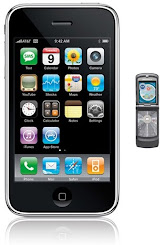


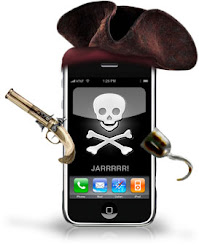


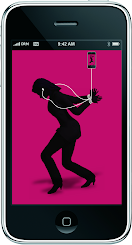
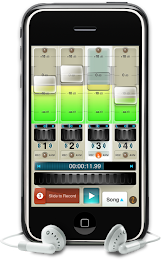



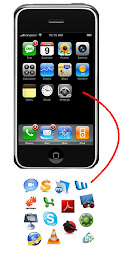
Copyright © 2009 MOBILE AND iPHONE All rights reserved. Theme by MERO NEPAL. | Blog creat by Deepak(aaditya).